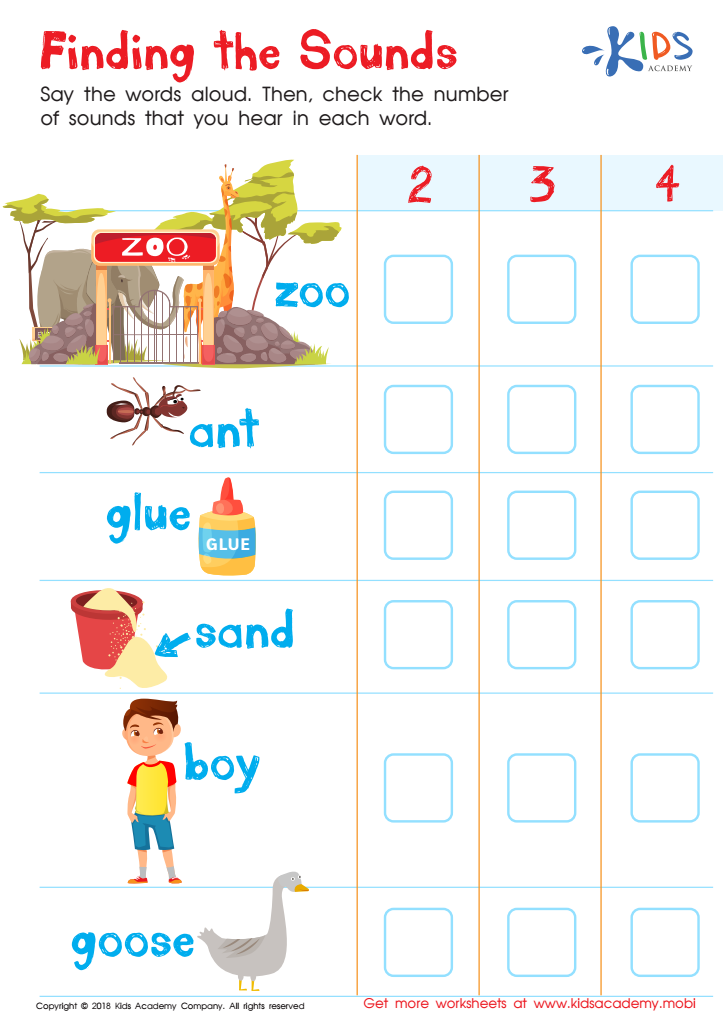Normal Letter Sounds Worksheets for Ages 6-9
9 filtered results
-
From - To
Welcome to our engaging collection of Normal Letter Sounds Worksheets designed for children aged 6-9! These interactive resources are perfect for reinforcing essential phonetic skills while making learning fun. Our worksheets encourage kids to recognize letter sounds through a variety of activities, including matching, tracing, and identifying sound pairs. By utilizing colorful illustrations and age-appropriate exercises, we aim to enhance the reading readiness of your young learners. Whether in the classroom or at home, these worksheets make phonics practice enjoyable and effective. Help your child build a strong foundation in reading with our thoughtfully curated worksheets today!


Finding the Sounds Worksheet


Hungry Dragon Worksheet


Let's Count the Sounds Worksheet


What Do You Hear? Worksheet


3 Sounds Worksheet


Listen to the Sounds Worksheet


Let's Check for «i» Sounds Worksheet


Is It m or n? Worksheet


Identify the Written Words Worksheet
Understanding normal letter sounds is crucial for children aged 6-9 as it forms the foundation for their reading and writing skills. During this developmental stage, children learn to decode words by recognizing how letters correlate to sounds. This skill, known as phonemic awareness, is vital in helping them read fluently and comprehend texts, which are essential skills in academic achievement and daily communication.
Parents and teachers should prioritize normal letter sounds because they enable children to tackle spelling, which involves connecting sounds to the appropriate letters. By reinforcing these sounds, adults can support learners in building a deep understanding of language structure, enhancing their ability to express themselves effectively.
Moreover, mastering letter sounds promotes confidence in young learners. As children gain proficiency, they are more likely to engage with reading materials, fostering a lifelong love for literature. This engagement not only improves literacy skills but also enhances cognitive development, critical thinking, and creativity. Additionally, a solid grounding in phonics can reduce frustration as children progress, ensuring they have the necessary tools to excel in future educational endeavors. By prioritizing letter sounds, parents and teachers play a pivotal role in shaping confident, capable readers and writers for years to come.
 Assign to My Students
Assign to My Students

















